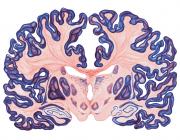Visual attention as a multilevel selection process.
Publication Year
2004
Type
Journal Article
Abstract
Natural visual scenes are cluttered and contain many different objects that cannot all be processed simultaneously. Therefore, attentional mechanisms are needed to select relevant and to filter out irrelevant information. Evidence from functional brain imaging reveals that attention operates at various processing levels within the visual system and beyond. First, the lateral geniculate nucleus appears to be the first stage in the processing of visual information that is modulated by attention, consistent with the idea that it may play an important role as an early gatekeeper in controlling neural gain. Second, areas at intermediate cortical-processing levels, such as V4 and TEO, appear to be important sites at which attention filters out unwanted information by means of receptive field mechanisms. Third, the attention mechanisms that operate in the visual system appear to be controlled by a distributed network of higher order areas in the frontal and parietal cortex, which generate top-down signals that are transmitted via feedback connections to the visual system. And fourth, the pulvinar of the thalamus may operate by integrating and coordinating attentional functions in concert with the fronto-parietal network, although much needs to be learned about its functional properties. The overall view that emerges from the studies reviewed in this article is that neural mechanisms of selective attention operate at multiple stages in the visual system and beyond and are determined by the visual processing capabilities of each stage. In this respect, attention can be considered in terms of a multilevel selection process.
Keywords
Journal
Cogn Affect Behav Neurosci
Volume
4
Pages
483-500
Date Published
12/2004
ISSN Number
1530-7026
Alternate Journal
Cogn Affect Behav Neurosci
PMID
15849892

